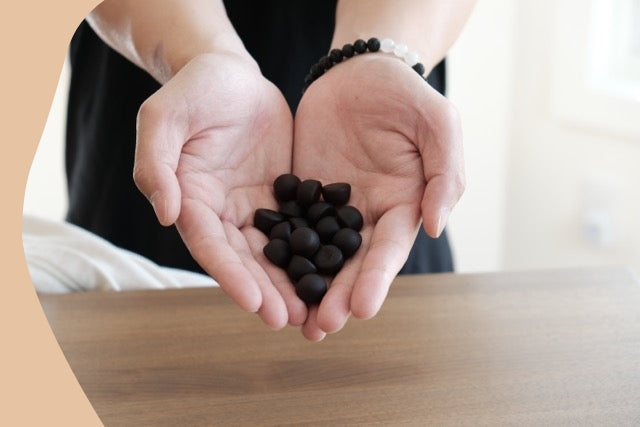
The Body & Mind on PTSD
11% or about 1 in 10 Canadian Armed Forces Personnel experience post-traumatic stress disorder, or PTSD, in their lifetime.
Almost 14% of Canadian Armed Forces Personnel deployed to Afghanistan between 2001 and 2008 were diagnosed with mental health issues upon their return.
And interestingly, about 20% of individuals who experience any trauma in their life eventually develop PTSD. It’s not only limited to the armed forces.
What is PTSD?
PTSD is a mental health condition that develops following a traumatic event. The person may experience visceral flashbacks, anxiety attacks, and nightmares relating to the event they saw or experienced. Most people are familiar with the disorder in veterans and military-related fields, but PTSD can affect anyone after any traumatic or particularly stressful event occurs.
Trauma is different for each individual. The repercussions of it on a person’s psyche greatly vary. There is no “normal.” Some bounce back quickly and are able to jump back into their lives, and others need adjustment periods, sometimes lasting their lifetimes. Every individual processes these traumatic events in their own way. It does not mean any one person is weaker or stronger than another. Essentially, it comes down to a chemical response within the body.
PTSD & Your Body
PTSD is often associated with an emotional reaction. Although it is an emotional reaction that others see, a lot is contributing to these reactions on a physiological level.
When a traumatic or particularly frightening event occurs, our body goes into our ‘fight or flight’ mode. This is our body’s response to a perceived threat. Stress hormones, such as adrenaline, spike. Your heartbeat quickens. Your brain puts any non-essential tasks on hold. The goal is survival.
PTSD occurs when the brain does not revert out of the ‘fight or flight’ state. This happens in about 20% of people. The part of the brain that deals with our emotions and our fears kick into overdrive. The perceived threat of danger doesn’t disappear. The brain is on high alert.
This constant flood of stress hormones changes the structure of the brain. The hippocampus, the area of the brain that controls memory, shrinks over time. Recalling and making new memories may become difficult. The lines between present and past events become blurred. An individual with PTSD may have trouble differentiating the two.
The amygdala, the emotional centre of the brain, gets bigger over time, creating out of control feelings and contributing to negative emotions, a reactive state, flashbacks, and nightmares. It can cause confusion in those with PTSD and can lead to depression or other mental health issues, especially if it is not treated early.
Luckily, treatment can reverse these changes.
Treatment for PTSD
Treatment varies and frequently depends on the individual and the symptoms they are experiencing. Symptoms may include:
- Trouble sleeping
- Intrusive and unwanted recurring memories or nightmares of the event
- Avoiding people or places that remind you of the event, and avoiding talking about it
- Negative thoughts and feelings of hopelessness
- Memory issues
- Withdrawing from family and friends, and activities you enjoy
- Emotional numbness
These symptoms often appear within 3 months of the traumatic incident. It is diagnosed as PTSD when these symptoms continue for longer than 1 month.
PTSD is a complicated mental health issue. It can impact a person’s day-to-day functioning and greatly affect their relationships. The stress PTSD places on the body can also have negative effects, including an increased risk of heart problems, digestive issues, and alcohol or drug abuse. Thus, it is important to seek treatment early and limit these negative repercussions.
Treatment often involves a multilevel approach. Following a proper diagnosis, your doctor may prescribe medications, such as antidepressants, combined with psychotherapy, such as cognitive therapy, exposure therapy, eye movement desensitization, and reprocessing therapy. Each treatment plan is made in accordance with the individual and their specific situation. Your doctor and therapist will determine the best course of action for you.
It may take time, but recovery is possible.
How Can You Help Someone With PTSD?
PTSD can cause strain in a relationship. And it can be hard to pinpoint. There may be a delay between the traumatic event and the appearance of symptoms.
But understanding the mental health condition can help to lessen the frustration and stress placed on a relationship. Understand that the person may not fully be in control of their behaviours and feelings. Try not to take things personally. It is hard. It does take mental perseverance, but it will help your loved one know they are not alone. Your support can aid in their recovery and treatment.
There are more ways than one that you can help your friend or family member cope. These include:
- Let them know that you are there for them and care about them.
- Encourage them to participate in activities and hobbies that they previously enjoyed.
- Be patient when them. Be the positive force they need. Remind them why they are so great and where their strengths lie. To do so, it is important to take the time to take care of yourself and also, deal with your own stress. Make sure to still participate in your own life while being there for your family member or friend.
- Listen and accept them. Avoid judging or disapproving stares or comments.
- Help them feel safe and reinforce trust. A person with PTSD may struggle with feeling safe and trusting people. Keep your promises and make plans with them for the future. Create a routine for them where they feel safe. Create a stress-free environment.
- Become familiar with their triggers and plan ahead. Triggers are often sensory experiences, like hearing a sound or smelling something involved in the traumatic event. These triggers can set off anxiety attacks and flashbacks. Try to learn and understand them. Ask your friend or family member what you can do in these situations to make things better.
- If they become angry, remain calm. Yes, this can be tough. Give them space and again, ask what you can do to help. If your safety is at risk and you can’t calm them, call emergency services. It is not worth them hurting themselves or others.
Conclusion
PTSD is a serious and complex mental health issue. If you know someone with PTSD, practice patience and let them know you are there for them. Understand the mental and physical challenges they may face on a daily basis. Help them seek out the treatment which will guide them toward peace and happiness in their life once again.
Remember, it’s okay not to be okay. Life is full of tough choices and obstacles. You can and you will overcome these hurdles. They will make you stronger and eventually lead you to a more meaningful, fulfilling, and better life.
Related Article: How to Clear Your Energy Field by Healing Traumatic Memories






